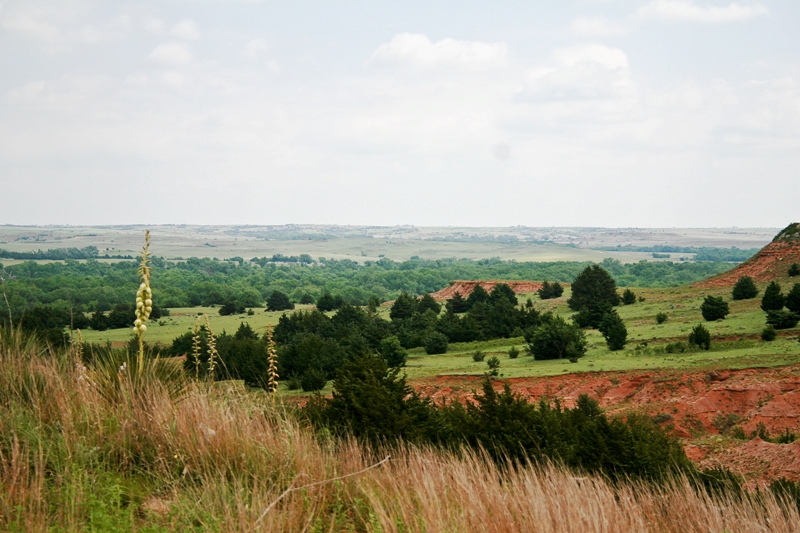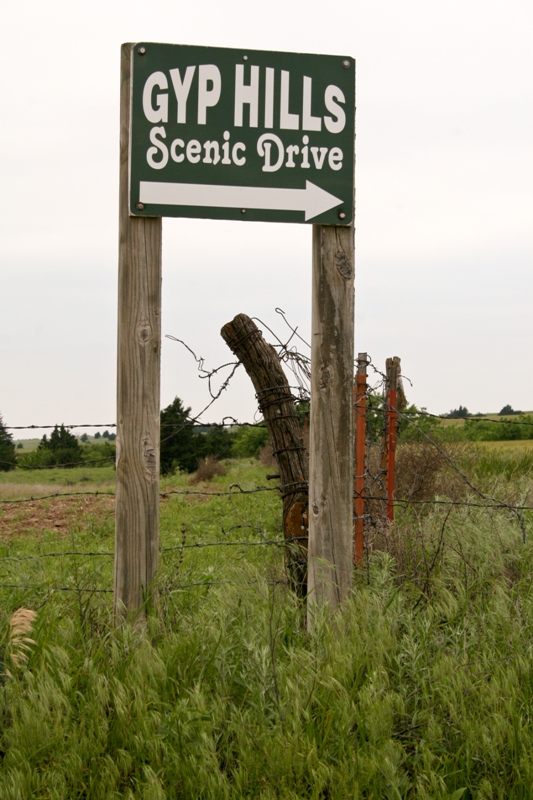Address:
Phone: 620.886.5293; 620.886.9815
Website: www.travelks.com/ksbyways/gypsum-hills/
 |
| View of the Gypsum Hills. Photo KSF |
 |
Travelers have the opportunity to see flat mesas, deep canyons, sharp high hills, red soils and caprock formations.
The
Byway provides a unique opportunity to experience the expansive High
Plains and Red Hills physiographic regions. Both topography and
vegetation change between the two regions. From rolling farm land and
midgrass prairie grazing land to the rugged, gypsum-capped flower pot
shale mesas and buttes with minimal vegetation, the Gypsum Hills Scenic
Byway showcases two of Kansas' physiographic regions -- the Red Hills and the High Plains.
The area is noted for its abundance of wildflowers in spring and summer. Naturally flowing springs, the red soil and green cedar trees provide a rich array of color. Recreational and historic opportunities complement the scenic experiences.
Contact: Elisa Stone, patrons@peacetreaty.org